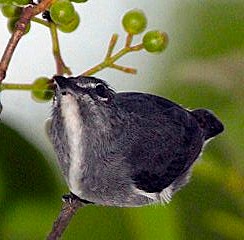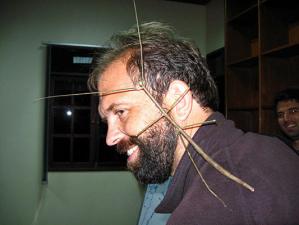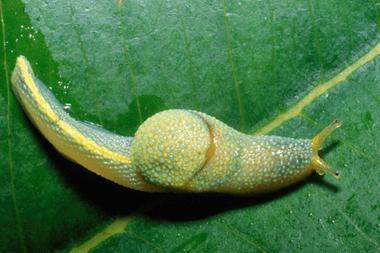
123 new species were discovered in Borneo over the last few years, including a frog with no lungs, a “ninja” slug firing love darts at its mate, and the world’s longest insect, according to an announcement yesterday by the WWF.
The exploration is a result of the Heart of Borneo conservation plan agreed to by the three countries that make up Borneo that conserves 85,000 square miles (220,000 square kilometers) of irreplaceable tropical rainforest.
Explorers have been visiting the island of Borneo for centuries, but vast tracts of its interior are yet to be biologically explored.
Unique species found nowhere else in the world inhabit the Heart of Borneo, an “island within an island”, including 350 birds, ten species of primate, 150 reptiles and amphibians and a staggering 10,000 plants.
The rate of discovery since the foundation of the preserve is more than three new species per month. The region also contains the pygmy elephant, orangutan, rhinoceros, and clouded leopard.
“These amazing new findings highlight the importance of our efforts to implement the HoB Declaration’s bold vision,” said Adam Tomasek, leader of WWF’s HoB Initiative.
Under the 2007 agreement, the three governments have committed to enhance protected area and trans-boundary management, develop eco-tourism and support sustainable resource management.
“Three years on, the Heart of Borneo Declaration is proving to be an irreplaceable foundation for conservation and sustainable development by establishing a framework for action to protect Borneo’s globally outstanding biodiversity, eco-system services and livelihoods,” WWF’s Tomasek said.
Some of the news species:
 The world’s longest insect is a stick insect measuring more than 1.6 feet (0.5 meters) in length, called Phobaeticus chani — only three specimens have been found, all in the Heart of Borneo.
The world’s longest insect is a stick insect measuring more than 1.6 feet (0.5 meters) in length, called Phobaeticus chani — only three specimens have been found, all in the Heart of Borneo.
A fiery-looking snake, the Kopstein’s Bronzeback is about 5 feet (1.5 meters) long, with a bright orange neck that fuses into an iridescent and vivid blue, green, and brown pattern that extends the entire length of its body.
A color-changing frog, called the Mulu flying frog, is tiny species with a small pointed snout that grows to just 1.4 inches (3.5 centimeters), and is unusual in that it has bright green skin at night but changes color to display a brown hue during the day. Its eyes follow suit to change color as well. It uses its webbed feet and aerodynamic flaps of skin on the arms and legs to glide from tree to tree.
The spectacled flowerpecker, pictured above and named because of its prominent eye-rings, has a grey body with bright white arcs above and below its eyes, a white throat and white tufts at the breast sides. Scientists think the flowerpecker is a canopy specialist, feeding off fruits high in tree canopies.
The ninja slug sports a tail that’s three times the length of its head, which it wraps around its 1.6-inch-long (4 cm) body as if a pet cat. The slug species makes use of so-called love darts. Made of calcium carbonate, the love dart is a harpoon-like structure that pierces and injects a hormone into a potential mate. The dart could increase the slug’s chances of reproduction.
The lungless frog, Barbourula kalimantanensis, breathes entirely through its skin. The frog appears flatter than most frogs because the space where its lungs would be is occupied by other organs.



















